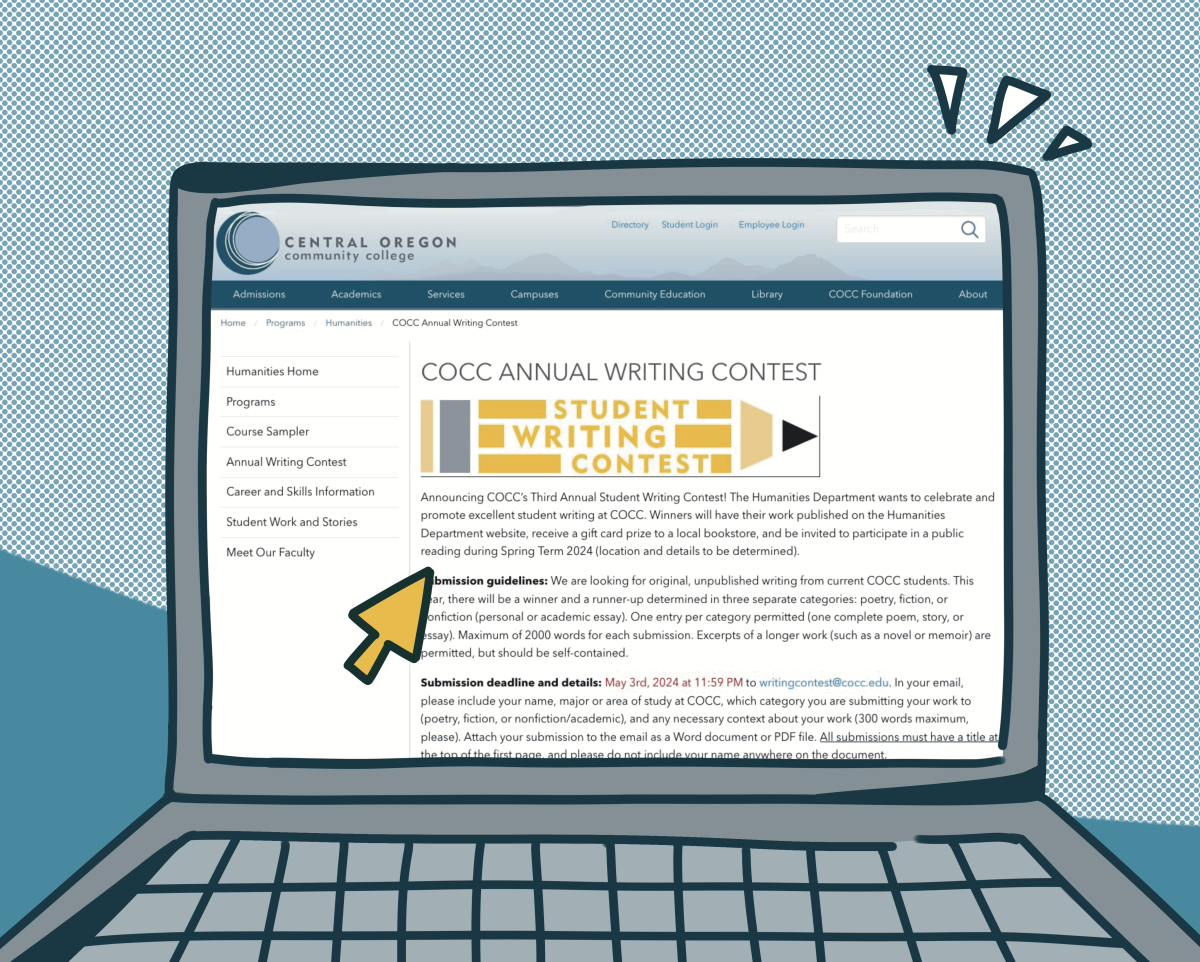teaches the history behind some bloodcurdling myths

Professor Terry Kreuger of COCC will teach a on Folklore & US Popular culture during spring term.
Irene Cooper
The Broadside
Professor Terry Krueger knows vampires. From the historical Vlad the Impaler, to the gruesome Nosferatu to Buffy’s modern quarry, Krueger illuminates writer Nina Auerbach’s quote, “Every age embraces the vampire it needs.”
“There’s nothing intrinsically interesting about vampires,” stated Krueger from his Grandview office, amid stacks of books addressing vampires —and many regarding the literary folklore of the Americas, another of Krueger’s areas of expertise.
“What makes [the subject] interesting is the specific vampire in a specific time,” said Krueger.
An example is the character of Nosferatu portrayed in the German film of 1922.
“Some critics read that as an early spasm of anti-Semitism… [wherein] a malevolent being begins to prey on Germans, particularly German maidenhood,” said Krueger.
In the 1970’s, the Dracula character appears as “Frank Langella, a stubbly handsome guy” who seduces women away from their husbands and “opens up a whole new world to them.”
According to Krueger, the early vampire myths of the Middle Ages were “realer in East Orthodox and Slavic cultures.”
Krueger said the first vampires were thought to be Christian heretics who ritually drank blood, and “could survive within the realm of Christianity.”
From this history emerged the vampire as a “scapegoat for folklore tradition.”
This term, Krueger—who served as a Fulbright lecturer in Argentina in 1983— is bringing the world of the ancient Aztecs alive for his students. For ninety-one years, the rule of the Aztecs proved itself “incredibly efficient, incredibly violent.”
The Aztecs practiced epic ritual in the City of Sacrifice, complete with skull racks and cannibalism, but also constructed a desalinization system,
a legal system, zoos and aviaries, and revered poetry and the grand poetic gesture.
A study of the Aztecs must expose the “beauty, poetry and savagery of Aztec life,” said Krueger.
Krueger achieves this through a combination of literature and other media.
“Books are not the medium to teach this generation,” said Krueger. This is a generation that “now processes icons well, but not symbols.”
“It’s cool,” said Krueger. An instructor can accomplish much in teaching from a combination of media.
“A movie can be better than some source material,” although “the interior [of a novel] doesn’t always translate to screen.”
Professor Stacey Donohue, also of the Central Oregon Community College Humanities department, addressed the variety of interests and styles of teaching represented in the department.
“We’re lucky here. The enrollment boom allowed us to do so.”
Krueger, who invented his own courses in mythology, stresses the “-ology of mythology, the message of the myth.”
Check out next term’s Introduction to Folklore and Mythology, or look for Professor Krueger’s lecture dates at the Bend Public Library.
Irene Cooper can be reached at [email protected].









